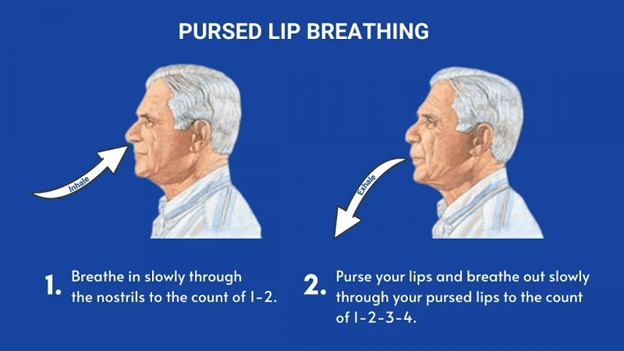A nurse is inserting an NG tube for a client who has a new prescription for enteral feedings. Which of the following actions should the nurse take to verify the placement of the client's tube? (Select all that apply.).
Measure the amount of aspirate in the NG tube.
Flush the tube with 50 mL of tap water.
Examine the color of aspirated secretions.
Measure the pH of the client's aspirate.
Obtain an x-ray of the client's chest and abdomen.
Correct Answer : A,C,D,E
Choice A rationale:
Measuring the amount of aspirate in the NG tube is one way to verify the placement of the tube. Aspirate should be tested for color, pH, and other characteristics to ensure proper positioning.
Choice B rationale:
Flushing the tube with tap water doesn't directly verify tube placement. This action might inadvertently introduce air into the tube, potentially leading to inaccurate assessment results.
Choice C rationale:
Examining the color of aspirated secretions is an essential step in verifying tube placement. Different colors of aspirate can indicate different anatomical locations, helping to ensure the tube is properly positioned.
Choice D rationale:
Measuring the pH of the client's aspirate is another important method to verify NG tube placement. Gastric aspirate tends to be acidic, while respiratory aspirate is usually more alkaline.
Choice E rationale:
Obtaining an x-ray of the client's chest and abdomen is a definitive method for confirming NG tube placement. It provides direct visualization of the tube's location and ensures accuracy.
Nursing Test Bank
Naxlex Comprehensive Predictor Exams
Related Questions
Correct Answer is B
Explanation
Choice A rationale:
Lying down while practicing pursed-lip breathing is not the correct instruction. Pursed-lip breathing is usually performed in a sitting or standing position. Lying down can restrict lung expansion and may not effectively support the purpose of this breathing technique, which is to improve airway pressure and reduce air trapping.
Choice B rationale:
"Exhale slowly through your mouth" is the correct instruction for pursed-lip breathing. This technique involves inhaling through the nose for a count of two and exhaling slowly and steadily through pursed lips for a count of four. The goal is to promote better exhalation, prevent airway collapse, and improve oxygen exchange. The rationale behind this choice is grounded in the mechanics of pursed-lip breathing, which helps create backpressure in the airways, maintaining them open and aiding in proper exhalation.

Choice C rationale:
Inhaling through pursed lips contradicts the proper sequence of pursed-lip breathing. The technique involves inhaling through the nose and exhaling through pursed lips. Inhaling through pursed lips would not provide the intended benefits of the technique.
Choice D rationale:
"Puff your cheeks when exhaling" is not the correct instruction. Puffing the cheeks during exhalation does not contribute to the effectiveness of pursed-lip breathing. This action could potentially impede proper exhalation and defeat the purpose of the technique, which is to control airflow and improve breathing efficiency.
Correct Answer is C
Explanation
Choice A rationale:
Metabolic acidosis is not the correct acid-base imbalance for the given ABG results. Metabolic acidosis is characterized by a low pH (acidic), low bicarbonate (HCO3) levels, and a compensatory decrease in the PaCO2. In the provided ABG results, the pH is elevated, and both the PaCO2 and HCO3 levels are within normal ranges.
Choice B rationale:
Respiratory acidosis is also not the correct acid-base imbalance for the given ABG results. Respiratory acidosis occurs when there is an elevation in PaCO2 due to inadequate ventilation, leading to an acidic pH. In the provided ABG results, the pH is elevated, and the PaCO2 level is within normal range.
Choice C rationale:
Metabolic alkalosis is the correct acid-base imbalance for the given ABG results. Metabolic alkalosis is characterized by an elevated pH, elevated bicarbonate (HCO3) levels, and a compensatory increase in PaCO2. In this case, the pH is higher than the normal range, the HCO3 level is elevated, and the PaCO2 is also slightly increased as the body attempts to compensate.
Choice D rationale:
Respiratory alkalosis is not the correct answer based on the provided ABG results. Respiratory alkalosis is marked by an elevated pH and a decrease in PaCO2 due to excessive ventilation. In the given ABG results, the pH is elevated, but the PaCO2 is not decreased; it's within the normal range.
Whether you are a student looking to ace your exams or a practicing nurse seeking to enhance your expertise , our nursing education contents will empower you with the confidence and competence to make a difference in the lives of patients and become a respected leader in the healthcare field.
Visit Naxlex, invest in your future and unlock endless possibilities with our unparalleled nursing education contents today
Report Wrong Answer on the Current Question
Do you disagree with the answer? If yes, what is your expected answer? Explain.
Kindly be descriptive with the issue you are facing.
